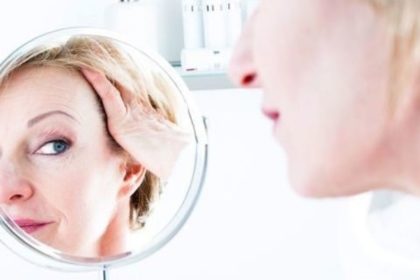Retaining the integrity of your skin is the first step to maintaining good health. The skin is the largest organ of the body and your first line of defense against infection, injury, damaging pollutants, and harmful ultraviolet rays.
Dirt and debris need to be removed from your skin and face, but without degrading the valuable skin layers. Stop the germ cycle with the following nine tips:
Cleansing Tip #1 – Soaping Up

Rub, Recite, and Rinse. Practice the 3 R’s of good basic hand washing.
Rub well, recite the alphabet, and rinse a lot. Frequent hand washing is one of the best preventive measures against spreading infectious diseases.
The Centers for Disease Control (CDC) recommends spending at least 20-30 seconds.
This is about the time it takes to recite the alphabet from A to Z, lathering your hands to thoroughly dislodge & remove germs. Then rinse well in warm water!
Cleansing Tip #2 – Rinsing
Soap works by attaching itself to dirt and lifting it off. Therefore, if the lather isn’t rinsed off completely, germs and soap end up drying on the skin.
Most people don’t rinse well enough after washing. When you think you’re done rinsing, splash your skin at least three more times. Better yet, recite the alphabet while rinsing as well.
Cleansing Tip #3 – Stripping Oils
Pimples are the result of bacteria normally present on the skin infecting a blocked hair follicle, usually caused by excess sebum (oil) and dead skin cells. Keeping skin clean and exfoliated may help.
Stripping or drawing oils from the skin may have the opposite desired effect with the over-productive oil glands reacting by secreting more lubricant (oil).
Avoid products that defat the skin, such as cleansers and astringents that contain ethyl alcohol (ethanol) or SD (specially denatured) alcohol.
Cleaning Tip #4 – Changing Towels
Change washcloths and towels at least once a week and launder in the hot water cycle of the washer. Towels and washcloths accumulate a collection of dead skin cells and bacteria.
Bathrooms are ideal breeding grounds for bacteria as well as dust mites which, thrive in warm, high humidity areas. Mites linger in fabrics and thrive on dead human skin cells.

If possible, use two washcloths (one for the face and one for the body), one bath towel, and one hand towel (for drying the face).
Rinse washcloths thoroughly after each use. Allow them to dry completely to avoid a damp environment that promotes the rapid growth of bacteria and other organisms.
Cleansing Tip #5 – Sterilizing Washcloths
To those prone to infections (such as with acne, damaged skin, or illnesses) sterilize washcloths daily as they can house millions of bacteria after only a few hours.
Simply rinse the washcloth well under running water, wring out tightly, and while still damp, microwave on high for two minutes to kill microorganisms. Hang and let dry thoroughly.

Cleansing Tip #6 – Bathing
Bathe in warm water (90-100 degrees Fahrenheit). Hot water (over 100 degrees) can strip your skin’s own natural protective oils. Water that is too hot also dilates tiny blood capillaries.
Over time these vessels will no longer constrict and will stay dilated resulting in reddened, irritated, blotchy skin.

Cleansing Tip #7 – Scrubbing
Scrubbing the skin is not recommended as it compromises the protective skin barrier, which may cause skin dryness, irritation, and cracking. Damaged skin harbors and transmits more bacteria.
Cleansing Tip #8 – Drying
Treat your skin gently. Pat skin dry – do not rub.
Cleansing Tip #9 – Using Antibacterials
In a publication by the Centers for Disease Control (CDC), plain soap is recommended for general use and with sufficient benefit.
The widespread overuse of antibacterial cleaning agents containing the drugs triclosan and triclocarban has become a growing concern as presented by Dr. Stuart Levy of Tufts University School of Medicine.
In the attempt to create germ-free environments, these anti-microbial products are now suspects in the emergence of bacterial strains that are insensitive to these antiseptics and resistant to antibiotics.





